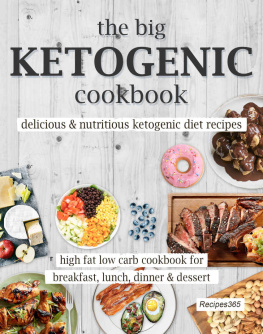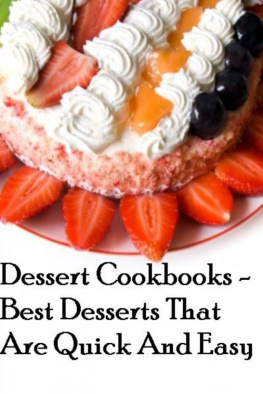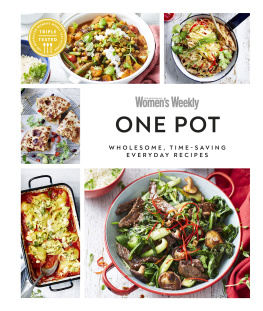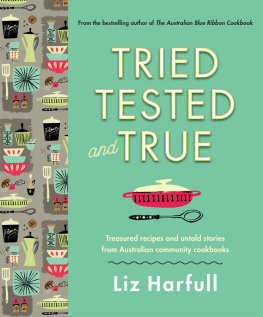
Thank you for buying this
St. Martins Press ebook.
To receive special offers, bonus content,
and info on new releases and other great reads,
sign up for our newsletters.

Or visit us online at
us.macmillan.com/newslettersignup
For email updates on the author, click here.
The author and publisher have provided this e-book to you for your personal use only. You may not make this e-book publicly available in any way. Copyright infringement is against the law. If you believe the copy of this e-book you are reading infringes on the authors copyright, please notify the publisher at: us.macmillanusa.com/piracy.
For my family
Jeff, Damien, Julia, and Omi
and
in loving memory of
Colin Gilmore, Ralph Ginsberg,
and David M. Smith
Letter found in a nineteenth-century manuscript receipt book. Collection of the author |
Hopestill Bretts list of belongings brought to Horncroft. Courtesy of the Annenberg Rare Book and Manuscript Library, University of Pennsylvania |
A map of the Lehigh Valley from Mrs. Pattersons manuscript receipt book. Courtesy, the Winterthur Library: Joseph Downs Collection of Manuscripts and Printed Ephemera |
A drawing depicting the miners gathering in a saloon from Mrs. Pattersons manuscript receipt book.
Courtesy, the Winterthur Library: Joseph Downs Collection of Manuscripts and Printed Ephemera |
Jewish housewife reading her cookbook as depicted in the Rochester Hadassah Cook Book.
Courtesy Rochester Hadassah |
Contribution from an aristocrat to Lady Freschevilles opulent seventeenth-century receipt book.
Courtesy, the Winterthur Library: Joseph Downs Collection of Manuscripts and Printed Ephemera |
Inscription on the inside front cover of Baileys Dictionarium belonging to the Darby family.
Courtesy of the Annenberg Rare Book and Manuscript Library, University of Pennsylvania |
Inscription on the first page of Baileys Dictionarium belonging to the Darby family. Courtesy of the Annenberg Rare Book and Manuscript Library, University of Pennsylvania |
Mary Madcaps signature and announcement I am. Courtesy of the Annenberg Rare Book and Manuscript Library, University of Pennsylvania |
The words raspberries and strawberries copied in a nineteenth-century manuscript receipt book indicating someone practicing writing. Courtesy, the Winterthur Library: Joseph Downs Collection of Manuscripts and Printed Ephemera |
Maternal commentary on the pages of the seventeenth-century Maddison manuscript receipt book. Courtesy of the Annenberg Rare Book and Manuscript Library, University of Pennsylvania |
Mrs. Maddison reflects on her writing ability.
Courtesy of the Annenberg Rare Book and Manuscript Library, University of Pennsylvania |
Lydia Grofton Jarviss manuscript receipt book copied out for me by my brother. Courtesy, the Winterthur Library: Joseph Downs Collection of Manuscripts and Printed Ephemera |
List of discheveled booksin barn, for self education on the last page of Grofton Jarviss receipt book.
Courtesy, the Winterthur Library: Joseph Downs Collection of Manuscripts and Printed Ephemera |
The poem Like Swallowes penned by Mrs. Maddison, the title copied by Mary Madcap. Courtesy of the Annenberg Rare Book and Manuscript Library, University of Pennsylvania |
Multiple clipped newspaper recipes affixed with a straight pin in Marion Harlands Common-Sense in the Household (1871). Collection of the author |
Marginalia from Mrs. Putnams receipt book (1854) critiquing the author. Courtesy of the Annenberg Rare Book and Manuscript Library, University of Pennsylvania |
Mrs. Elizabeth Raffalds frontispiece portrait in The Experienced English Housekeeper. Courtesy of the Annenberg Rare Book and Manuscript Library, University of Pennsylvania |
Frontispiece to Eliza Haywoods New Present for a Servant-Maid depicting a woman reading instructions from the cook book while cooking. This item is reproduced by permission of the Huntington Library, San Marino, California |
A receipt how to make a Right Presbyterian in two days found in Catharine Cottons seventeenth-century cookery manuscript. Courtesy of the Annenberg Rare Book and Manuscript Library, University of Pennsylvania |
A stereopticon slide debasing an Irish servant.
Courtesy, the Winterthur Library: Joseph Downs Collection of Manuscripts and Printed Ephemera |
I savor each simple gesture in this kitchen, filling the tea kettle, lighting the stove, click of the cup in the saucer. Theyve all been here, are here, the family of women, nursing one another with teasde canela, hierbabuena, gordolobo. Straight and erect in their good health or bent with age and arthritis, sacramental acts for another woman, or a husband, father, or child, steeping an old cure that began underground. It is strange to be so many women, as Adrienne Rich says.
Pat Mora, House of Houses (Boston: Beacon Press, 1997)
During the years I have worked on this project the support, encouragement, and general goodwill of many friends and strangers have exhilarated me.
I owe a debt to Michael Ryan and Daniel Traister of the Annenberg Rare Book and Manuscript Library, University of Pennsylvania, for inviting me to curate the Esther B. Aresty Collection of Rare Books on the Culinary Arts. Nancy Shawcross, Lynne Farrington, and John Pollack of the Annenberg Library graciously guided me through mounting my first exhibition. They and Margaret Kruesi have continued to be an ever-present source of helpfulness, intelligence, and bibliographical advice. Jerry Drew, Jennifer Lindner, Dana Plansky, Rebecca Smith, and Karoline Wallace provided much appreciated research support and the benefit of their own perspectives on the material. Patricia Smith, then of the University of Pennsylvania Press, encouraged me to write this book.
I wish to thank Sherrie Inness for her support and editorial advice as I wrote chapter 7, a version of which first appeared in her edited volume, Kitchen Culture in America, published by University of Pennsylvania Press. I thank the Press for allowing me to reprint it here. The excerpt from House of Houses is reprinted by permission of Beacon Press, Boston.
I took several leaves from the College of General Studies at Penn to complete the research and writing. I am deeply grateful to Richard Hendrix, director, and to my colleagues for their patience during my absences. In particular, I would like to thank Susan Gill, Denise Miller, and Kristine Rabberman who tended to student affairs while I was away.
A research grant from the University of Pennsylvania Research Foundation enabled me to travel to England to the archives in Lincoln and London. Staff at the Lincolnshire Archives, Deborah Thornton especially, and the Public Records Offices in London answered a myriad of questions and helped to guide my searches.
Librarians and archivists at the Historical Society of Pennsylvania, the Library Company of Philadelphia, and the Schlesinger Library at Radcliffe helped me locate documents. Stephen Tabor at the Huntington Library, San Marino, California, was especially helpful, as was Ian Argall of the Huntingdonshire Family History Society, England.
Next page








